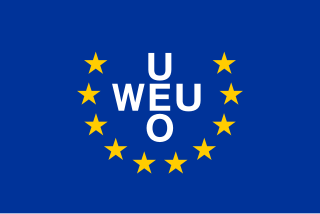
The Western European Union was the international organisation and military alliance that succeeded the Western Union (WU) after the 1954 amendment of the 1948 Treaty of Brussels. The WEU implemented the Modified Brussels Treaty. During the Cold War, the Western Bloc included the WEU member-states, plus the United States and Canada, as part of the North Atlantic Treaty Organization (NATO).
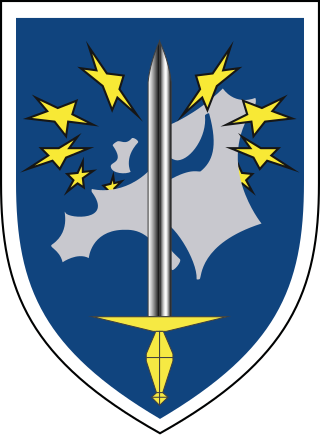
Eurocorps, located in the French city of Strasbourg (Bas-Rhin), is a multinational corps headquarters. Founded by France and Germany in 1992, it is today composed of personnel from six framework nations and five associated nations. The framework nations place the Eurocorps at the service of the European Union (EU) and NATO, which certified it in 2002 as one of its nine High Readiness Land Headquarters.
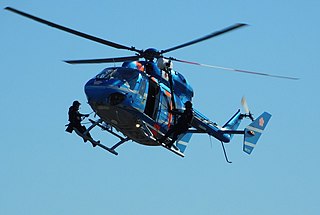
A rapid reaction force / rapid response force (RRF), quick reaction force / quick response force (QRF), immediate reaction force (IRF), rapid deployment force (RDF), or quick maneuver force (QMF) is a military or police unit capable of responding to emergencies in a very short time frame.

The Common Security and Defence Policy (CSDP) is the European Union's (EU) course of action in the fields of defence and crisis management, and a main component of the EU's Common Foreign and Security Policy (CFSP).

An EU Battlegroup is a military unit adhering to the Common Security and Defence Policy (CSDP) of the European Union (EU). Often based on contributions from a coalition of member states, each of the eighteen Battlegroups consists of a battalion-sized force reinforced with combat support elements. Two of the battlegroups were to be capable for operational deployment at any one time. The civil power that oversees these battlegroups is the Council of the European Union.
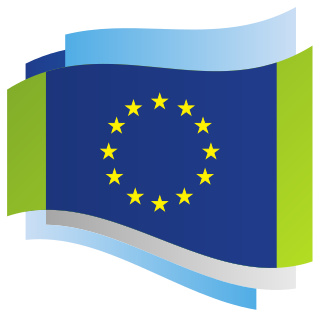
The European Defence Agency (EDA) is an agency of the European Union (EU) that promotes and facilitates integration between member states within the EU's Common Security and Defence Policy (CSDP). The EDA is headed by the EU High Representative for Foreign Affairs and Security Policy, European Commission’s Vice President (HR/VP), and reports to the Council. The EDA was established on 12 July 2004 and is based in Brussels, Belgium, along with a number of other CSDP bodies.

The Petersberg Declaration was adopted by ministers of the Western European Union on 19 June 1992 at Hotel Petersberg, near Bonn in Germany. It defined military tasks of a humanitarian, disarming, peacekeeping and peacemaking nature that the WEU would be empowered to do. The contents and responsibilities arising from the declaration, known as the Petersberg Tasks, were later transferred to the European Union's (EU) European Security and Defence Policy (ESDP), presently known as the Common Security and Defence Policy (CSDP).

The Military Staff of the European Union (EUMS) is the directorate-general of the European Union's (EU) External Action Service (EEAS) that contributes to the EU's Common Security and Defence Policy (CSDP) by providing strategic advice to the High Representative (HR/VP) and commanding operations through its Military Planning and Conduct Capability (MPCC) operational headquarters. From the end of 2020, the MPCC will be capable of running executive operations of up to 2,500 troops, i.e. the size of one EU battle group, as well as 3 non-executive missions.

The European Rapid Operational Force (EUROFOR) was a multinational rapid reaction force composed of forces from four states of the European Union: Italy, France, Portugal and Spain. It had a permanent staff capable of commanding operations, involving commitments of up to a Light Division in size. Eurofor was formed in May 1995 in Lisbon, and was answerable to the Western European Union (WEU) directly. It was tasked with performing Petersberg tasks, including humanitarian, peacekeeping and peace enforcement missions. With the merger of several WEU elements into the European Union, Eurofor had by and large become part of the Common Security and Defence Policy. It was eventually transformed into an EU Battlegroup and was on standby from 1 July until 31 December 2011. On 2 July 2012, Eurofor was dissolved.

The African Standby Force (ASF) is an international, continental African, and multidisciplinary peacekeeping force with military, police and civilian contingents that acts under the direction of the African Union. The ASF is to be deployed in times of crisis in Africa. Addis Ababa, Ethiopia, serves as the Force's Headquarters. Douala, Cameroon, was selected in 2011 as the site of the AU's Continental Logistics Base (LOGBASE).
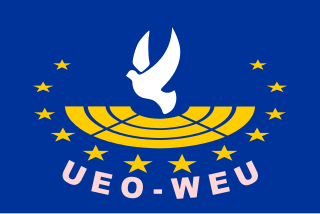
The Assembly of the Western European Union, also called the European Security and Defence Assembly, was a parliamentary assembly for delegations from the national parliaments of the member countries of the Western European Union (WEU), a security and defence organisation. Its final session was on 10 May 2011.
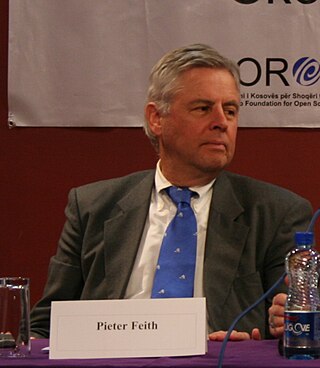
Pieter Cornelis Feith is a Dutch diplomat, formerly serving as the European Union Special Representative (EUSR) and as the International Civilian Representative in Kosovo.
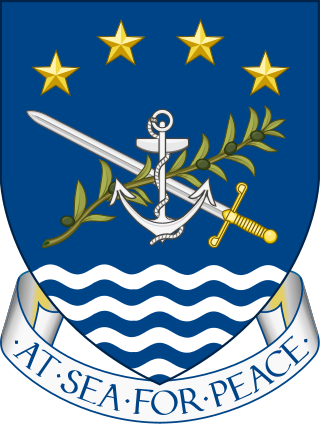
The European Maritime Force is a non-standing, military force with the current participation of France, Italy, Portugal, and Spain. The force may carry out naval, air and amphibious operations, with an activation time of 5 days after an order is received.
The Multinational Division Central MND (C), was a multi-national division in NATO for Central Europe and had its headquarters at the British JHQ Rheindahlen with its barracks near Mönchengladbach.

The Saint-Malo declaration was a document signed in December 1998 by British prime minister Tony Blair and French President Jacques Chirac, who met to advance the creation of a European security and defense policy, including a European military force capable of autonomous action. The summit where the document was signed took place at the French coastal resort of Saint-Malo.

This article outlines the history of the Common Security and Defence Policy (CSDP) of the European Union (EU), a part of the Common Foreign and Security Policy (CFSP).

This article outlines the defence forces of the European Union (EU), which implement the EU's Common Security and Defence Policy (CSDP) in CSDP missions. There are two categories of EU multinational forces: ones that have been established intergovernmentally and made available to the CSDP through article 42.3 of the Treaty on European Union (TEU), such as the Eurocorps; and the EU Battlegroups, established at the EU level.

The Headline Goal 2010 was a military capability target set by the European Council in June 2004 after the previous Helsinki Headline Goal had been completed in 2003.

The European Union (EU) and the North Atlantic Treaty Organisation (NATO) are two main treaty-based Western organisations for cooperation between member states, both headquartered in Brussels, Belgium. Their natures are different and they operate in different spheres: NATO is a purely intergovernmental organisation functioning as a military alliance, which serves to implement article 5 of the North Atlantic Treaty on collective territorial defence. The EU on the other hand is a partly supranational and partly intergovernmental sui generis entity akin to a confederation that entails wider economic and political integration. Unlike NATO, the EU pursues a foreign policy in its own right—based on consensus, and member states have equipped it with tools in the field of defence and crisis management; the Common Security and Defence Policy (CSDP) structure.
The Strategic Compass for Security and Defence is a roadmap document written by the European External Action Service in 2022. and adopted on 25 May 2022 by the European Council. Josep Borrell, the foreign policy chief at the time, said that it was a "turning point for the European Union as a security provider and an important step for the European security and defence policy." He also said that given the 2022 Russian invasion of Ukraine, a "sea change in EU security and defence" was necessary. The document is seen as a parallel to the National Security Strategy of the United States. It was the first time a collective threat assessment procedure was written. A lengthy list of deliverables included the birth of the Rapid Deployment Capacity, by 2025. Its intended reach was global. A lecturer thought that "Russia has unleashed the strongest push to strengthen Europe’s defence since the end of the Cold War", and that this document provided the necessary impetus.















